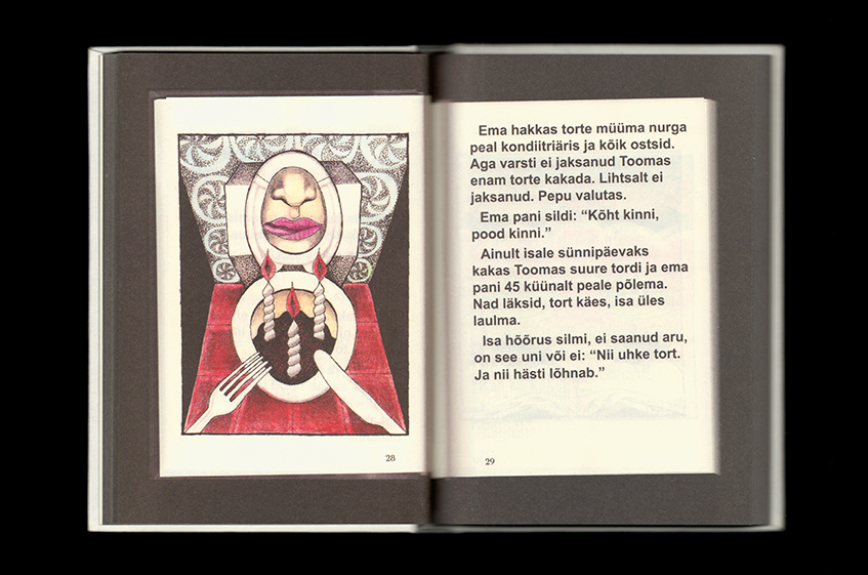Estonia is an European country with 1.3 million population. Estonian is the native language of Estonia, spoken by almost 1.1 million Estonian people. Estonian language is pretty similar to the Finnish language, as the country has Finland as neighbour on one end, and Russia on the other. One can observe many Russian loanwords in the Estonian language.
In this read, we bring to you 9 cool facts about the Estonian Language that will escalate your quest to learn Estonian Language.
The first Estonian language book was printed in 1535.
The elementary Estonian writings dates back to 1520s. The first book to be written in the Estonian language was Wanradt-Koell Catechism in 1535. It is a collection of religious translations of the Kullamaa prayers.

With the evolution of written Estonian language, two separate literary culture centres emerged. In the North- the city of Tallinn and in the South, the Tartu city.
Estonian language has more sounds than standard Latin.
The modern Estonian language is written in Latin language alphabet (Roman script). According to the Estonian accent, some words could not be covered with the basic latin alphabets. Hence, specific diacritic marks are added to produce certain sounds.
The Estonian language that we use today is based on the 19th century’s revised orthography (i.e. the conventional spelling system of a language).
The Estonian language is scattered across Russia.
Before the Second Northern War, Estonia was ruled by the Swedish premier. After defeating Sweden at the Battle of Poltava, Estonia came under the power of the Russian Tsar Peter I. And this laid the inception of severe Russian rule in Estonia, which became even more severe during the reign of Tsar Alexander III. In 1882, the Russian Municipal constitution was established and replaced the Baltic criminal and civil codes with the Russian law. By 1887, even the German and Estonian languages were replaced by the Russian language for education in Estonia.
Until 1917, Estonia was a part of Russia. That is why one can observe the Estonian language being spoken in many parts of Russia as well.
Estonian is a Finno-Ugric Language.
Finno-Ugric or Finno-Ugrian is a traditional grouping of languages in the Uralic language family. These are mostly the native languages spoken in Central, Eastern, and Northern Europe and North Asia. The term- Uralic corresponds to the region on either side of the Ural mountains.
The Uralic language has the highest number of Estonian, Finnish, and Hungarian speakers, hence it is called as Finno-Ugric language.
The Estonian languages 8 dialects and 117 subdialects!
Before the 18th-century, the speech peculiarities of the Estonian speakers were due to the region they belonged. As the population of Estonia increased, the dialect boundaries became prominent mainly due to the administrative setups. The clearest distinction in the dialects of Estonian language is observed between the Northern and Southern Estonian. It consists of 8 dialects and 117 sub-dialects.
The people on the Northwest coast of Lake Peipsi use the õ-sound more frequently. For example, kõllane õrav for kollane orav, meaning yellow squirrel.
 At times, apart from the pronunciation, the vocabulary also changes from North to South Estonia. For example, in South Estonia the birch is called kõiv, while in North Estonia it is kask.
At times, apart from the pronunciation, the vocabulary also changes from North to South Estonia. For example, in South Estonia the birch is called kõiv, while in North Estonia it is kask.
An Estonian sentence can have endless compounds.
This is interesting about the Estonian language is that a sentence can be framed with any number of compounds. In Estonian, it is possible to form endless compounds by converting the first word into the next word’s genitive (relating nouns or pronouns by indicating a close association).
For example, the sentence- anna õlu üle Ülo õe õla. (meaning- hand the beer over Ülo’s sister’s shoulder.)
Estonian is one of the hardest languages to learn for English speakers
According to the Foreign Service Institute, Estonian is the fifth hardest language to learn. Especially for the native English speakers, this language is difficult because it operates with 14 noun cases.
Estonian has 25 diphthongs i.e. a case when two adjacent vowel sounds occur within the same syllable. There are three lengths of the consonants and vowels in Estonian- short, long, and very long and the way they are used changes the meaning of the word. For example, lina means linen in Estonian, where as linna means city.
But Estonian is considerably easier for a Finnish speaker!
According to the Foreign Service Institute, Estonian is the fifth hardest language to learn and Finnish is the sixth. Differing by a rank, the two languages are hence comparatively easier for each other. 😉 Jokes apart.
Estonian is easier to learn for the Finnish speakers because of the following reasons-
- Regional influence: Finland is the neighboring nation, hence one can observe cultural similarities between the two, and so the language.
- Both Finnish and Estonian languages belong to the Uralic language family.
- Estonian has 14 noun cases and Finnish has 15.
- Both the languages have extra vowels than English language, hence it is easier to adapt to Estonian for the Finnish speakers.
The Estonian language is strongly influenced by German.
The Ethnic Germans, or the Baltic Germans were the inhabitants of the eastern shores of the Baltic sea, which is today Estonia and Latvia. Till 1918, the region was under the Baltic Germans’ rule and Estonia became the independent nation after the Bolshevik revolution in 1917. Because the native population of Estonia has German origin, the language is strongly influenced by the German.
Check out these articles to up your language learning game:
Learn a Language Thrоugh Trаvеl: Tips That Help



